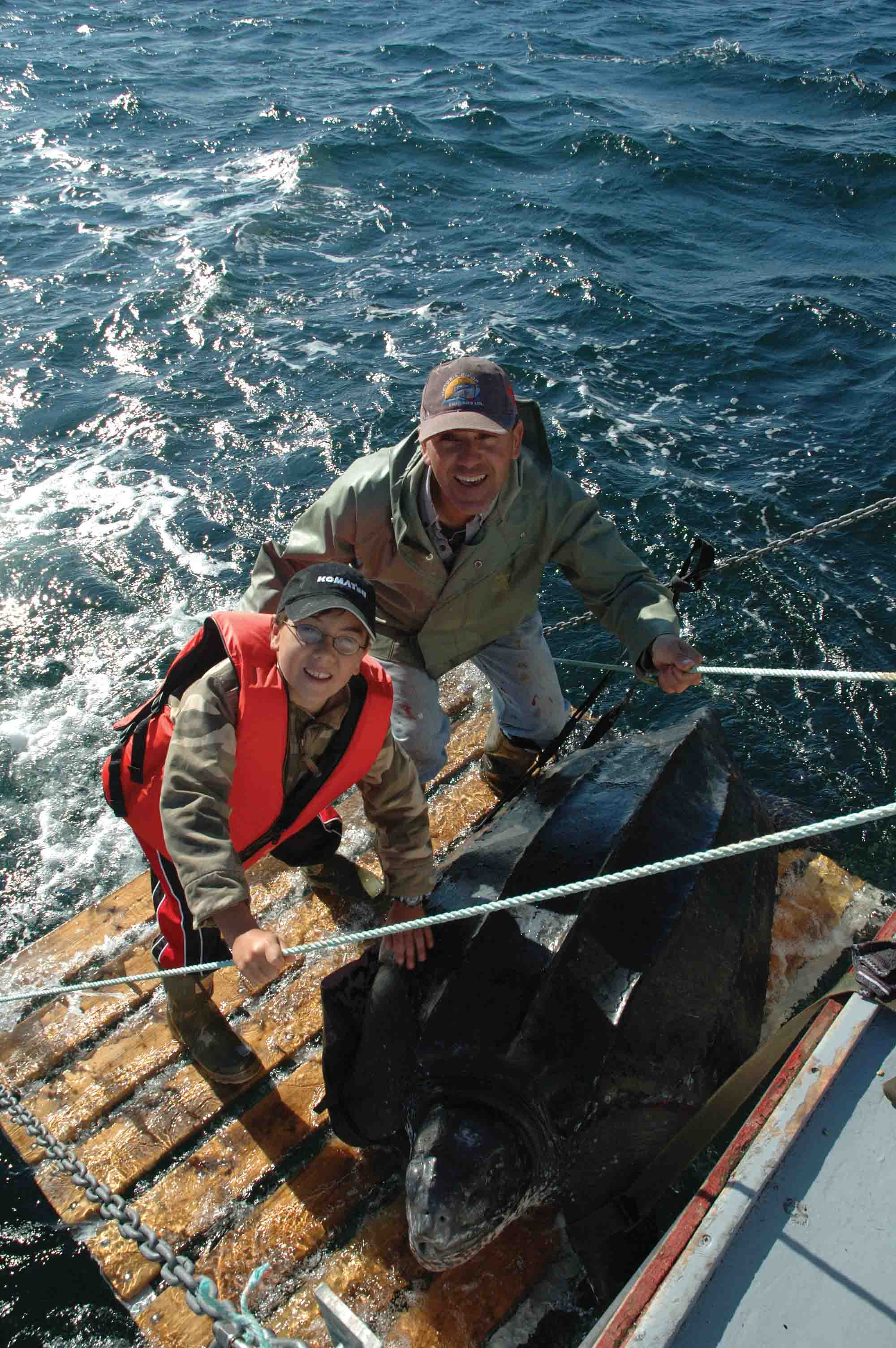Gone Turtling
Father and son team, Blair and Ben Fricker, assist in the handling of an adult leatherback turtle near Neil’s Harbour, Nova Scotia. © Canadian Sea Turtle Network
By Kathleen Martin
Today is a rare day off the rugged Atlantic coast of northern Cape Breton Island in Nova Scotia, one of Canada’s eastern provinces. Instead of blowing a gale as it usually does, the wind is quiet and the water is flat calm, reflecting the sky above it like a sheet of glass.
Bert Fricker, a commercial fisher from the tiny village of Neil’s Harbour, looks over the water and announces, in a hopeful tone, that it is a perfect day for sword fishing. He leaps aboard the Ben and Em, his brother Blair’s red-and-white Cape Island fishing boat.
Although the Frickers expertly set up a swordfish harpoon pole, it isn’t that elusive animal—not seen for years in this area’s waters where it was once abundant—for which they’re going to sea today.
Today, as they have done for the past 10 years, the Frickers are off “turtling” with biologist Dr. Mike James of the Canadian Sea Turtle Network (CSTN). When James first arrived in Neil’s Harbour a decade ago in search of the endangered leatherback turtle at sea, he met the Frickers at their homes with a giant hoop net for catching turtles strapped to a makeshift roof rack on his car. The comic scene brings laughter even now—the fishermen ribbing James for the heavy equipment that they immediately began helping adapt for the realities of working on the ocean.
The team has worked together since, chatting, even at this early hour, as they pile onto the Ben and Em for what looks to be a good day.
This scene is remarkable not only for the long list of scientific information important to the conservation of leatherbacks that this teamwork has contributed, but also for the fact that the greatest threat to leatherback turtles in Canadian waters is entanglement in fishing gear. Yet, in Canada, the people who are working to save this species are commercial fishermen. In addition to the Frickers, CSTN works with more than 500 volunteer fishermen to conserve leatherbacks at sea.
Bert, Blair, and their nephew Josh are the core field team in Neil’s Harbour, and they are involved in everything from designing equipment to capturing turtles. They record and help to analyze data. And they watch carefully, as the turtles that the team has satellite tagged make incredible journeys of thousands of kilometers from chilly Canadian waters down to nesting beaches throughout the Caribbean. Other fishermen in CSTN disentangle turtles they find accidentally caught in their gear and call in sightings of the turtles they find at sea. Together, they have helped identify Canadian waters as critical habitat for this endangered species.
James and his colleagues at CSTN are adamant about the importance of working with fishermen to conserve marine species. Fishermen have proved to be willing and committed partners, when approached with respect and as the intelligent and knowledgeable mariners they are.
Today is also special in another way. As Blair navigates the Ben and Em in a wide arc around the breakwater and out to sea, his son, Ben, hops up next to him, hoping to be the first to spot a turtle. Ben is as eager to learn about the ocean and the animals in it as is his father—and many fishermen like him—to protect them for his future.
This article originally appeared in SWOT Report, vol. 4 (2009). Click here to download the entire article as a PDF.

